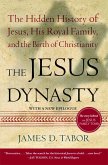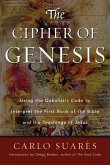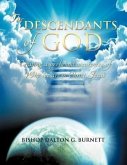RELIGION / CHRISTIAN STUDIES "This book is a testament to Graham Simmans' lifetime of devotion to seeking out the truth. Contentious without being confrontational, this book will by its very nature be controversial, appealing to the broad audience now alert to such mysteries, following The Da Vinci Code. Above all, it will be valued as a book that will make the reader think." --Lynn Picknett and Clive Prince, authors of The Templar Revelation and The Sion Revelation ." . . catapults us into a new dimension far beyond the recapitulations of previous authors. Graham Simmans' legacy opens an enticing window on what might really have happened to Christ if he survived crucifixion." --Robert Feather, author of The Mystery of the Copper Scrolls of Qumran and The Secret Initiation of Jesus at Qumran Jesus did not die on the cross. He survived and went to southern France with his wife, Mary. This possibility is proposed by Graham Simmans, who spent many years completing his quest to find the real beginnings of Christianity. Simmans believes that the spread of Christianity beyond Jerusalem was tied to Jesus's survival of the crucifixion and his subsequent emigration to Europe. Using Coptic and Jewish sources, including the Talmud, which allow a glimpse of the Christian philosophy espoused by Jesus, he contends that true Christianity was brought into France, Britain, and Spain from first-century Egypt and Judea, not fourth- and fifth-century Rome. His investigation shows that after a time in Egypt, Jesus settled in Rennes-le-Chateau, a sophisticated and cosmopolitan center of spiritual diversity. It was a natural move for Jesus to settle in the Narbonne area of France--an area already heavily settled by Jewish and Gnostic groups. Here, safely outside the reach of the cultural dictatorship of the Roman Church, the Gnostic secrets he taught survived the centuries. Later, the Knights Templar centered their activity in the Languedoc region around Rennes-le-Chateau, where, within the Jewish communities, a well-connected and influential opposition to Rome already existed. This resistance to Rome gave rise to a religious culture that included elements of Gnostic, Pythagorean, and Kabbalistic teachings. Until the Crusades against the Cathar heretics reasserted the dominion of Rome, the culture that flourished around Rennes-le-Chateau embodied the true essence of Christ's message. GRAHAM SIMMANS (1919-2005) was the coauthor of Rex Deus: The True Mystery of Rennes-le-Chateau and the Dynasty of Jesus. He spent fifteen years living in Rennes-le-Chateau to uncover these Christian secrets.








